By Ludwig Heinrich Dyck
With the German Sixth Army in its death throes at Stalingrad in January 1943, Stavka, the Soviet High Command, sought to capitalize on the disaster by unleashing massive offensives along the entire German-Soviet front. Although eclipsed by the gargantuan operations that followed against the German Army Groups Center and South, the fighting was no less fierce in the north.
Since September 8, 1941, Leningrad lay besieged by Field Marshal Georg von Küchler’s Army Group North and by Germany’s Finnish allies. Of Leningrad’s prewar population of nearly three million, 637,000 remained in the bombed city; the rest had been evacuated or had succumbed to the siege. At least the worst days of starvation had passed, alleviated by summer gardens of cabbages and potatoes. Nevertheless, the city remained in deadly danger.
Five previous attempts to break the blockade in 1941 and 1942 had resulted in costly Soviet defeats. German artillery shells continued to rain onto Leningrad and only the “Road of Life,” the supply line across frozen Lake Ladoga, enabled supplies and reinforcements to reach the city. However, the Germans remained too weak to capture the city by direct assault.
A Leningrad Breakout
Lieutenant General Leonid A. Govorov’s Leningrad Front staunchly continued to defend Leningrad and hold onto a bridgehead at Oranienbaum, bordering the Gulf of Finland to the west. To the east, Hero of the Soviet Union General Kirill A. Meretskov stood ready to lead his Volkhov Front in a renewed breakthrough attempt to Leningrad and to Govorov’s front. On Meretskov’s left flank, General Filipp N. Starikov’s Eighth Army stood by for additional support. Now, like never before, there was a real chance that the ring around Leningrad could finally be burst open. It was Govorov who figured out just how it could be done.
Govorov’s Operation Iskra, or Spark, sought to secure a land bridge to Leningrad from the east. To do this Govorov had to overcome the German divisions in the Shlisselburg-Siniavino corridor. Shlisselburg literally meant “key fortress,” as named by Peter the Great, who realized that the fortress town was the key to the Ingra, the name of the region to the south of Lake Ladoga. Now, over 200 years later, Shlisselburg and the land to its east and south were keys to the relief of Leningrad. The Shlisselburg corridor blocked the linkup between the Leningrad and the Volkhov Fronts and was a base for future German attacks against Leningrad and against the Road of Life. The corridor stretched south from the shores of Lake Ladoga between Shlisselburg to the west and Lipka to the east. Roughly eight miles wide at the north, the corridor began to widen, like a bottleneck, in a southward direction for six miles. At that point the commanding heights of Siniavino rose from the forested bog.
Govorov planned the attack in detail. The Leningrad Front’s Sixty-seventh Army would attack the Shlisselburg-Siniavino corridor from the west while the Volkhov Front’s Second Shock Army and the Eighth Army would attack from the east. Govorov received an additional rifle division, five rifle brigades, and an antiaircraft artillery division, while Meretskov’s front was strengthened by five rifle divisions. Both fronts also received numerous additional mortar, tank, and artillery regiments and battalions. To make sure that the attack would succeed, Govorov amassed three times as many artillery pieces than had been used in the failed attacks of 1941-1942.
Lindemann’s Defenses
Govorov’s Sixty-seventh Army was commanded by General Mikhail P. Dukhanov, one of the Soviet Union’s best commanders. Meretskov’s Second Shock Army was led by Lt. Gen. Vladimir Z. Romanovskii. In addition to the regular troops, 10 partisan detachments were supplied with 2,000 rifles, hundreds of machine guns, and thousands of pounds of explosives to create havoc in the German rear. Senior Soviet commander Marshal Georgi Zhukov flew in at the last minute to coordinate Spark.
In contrast to the Soviet fronts, Küchler’s Army Group North was weakened by having to give up divisions that were even more desperately needed in the southern and central Russian sectors. Küchler lost the Eleventh Army and a further nine divisions from the Eighteenth Army. Despite this, Küchler expected the Eighteenth Army to continue to besiege Leningrad from the southwest, south, and southeast. At the same time, the Eighteenth Army had to prevent a breakout from the Oranienbaum bridgehead and block any relief by the Volkhov Front.
The Eighteenth Army was commanded by Col. Gen. Georg Lindemann, a Prussian officer and battle-hardened veteran of World War I and a holder of the Knight’s Cross. Well aware of his army’s vital task, Lindemann prepared his troops with the words, “As the source of the Bolshevik Revolution, as the city of Lenin, it is the second capital of the Soviets…. For the Soviet regime the liberation of Leningrad would equal the defense of Moscow, the battle for Stalingrad.”
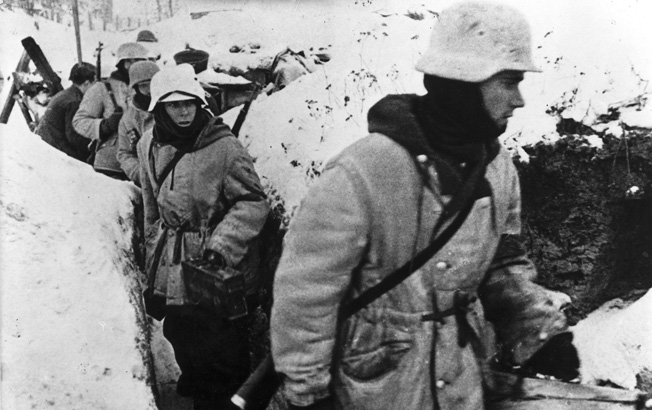
To prevent this liberation, Lindemann naturally made sure his strongest defenses were in the Shlisselburg-Siniavino corridor. Here, the XXVI Corps’s 1st, 227th, and 170th Infantry Divisions and the LIV Corps’s SS Police Division and parts of the 5th Mountain Division waited in their earthen dugouts and trenches in three defensive belts amid forested, frozen swamps and stone villages. Three regiments of the 96th Infantry Division stood by as reserve at Mga. Despite their strong positions, Lindemann’s forces were stretched so thinly that the average divisional frontage was over 10 miles long.
Preparing For Operation Spark
Govorov and Marshal Kliment Voroshilov, a member of the Defense Committee, walked behind a T-34 testing the ice of the River Neva. Suddenly the tank slid out of control, and the ice cracked in all directions. As the metal giant plunged into the river, Voroshilov nearly fell in as well. Govorov reacted instantaneously, quickly grabbing Voroshilov and yanking him back. The tank driver managed to swim out of the tank and save himself. The weakness of the ice convinced Govorov to postpone the attack from December 27 to January 12th. In the meantime, he ordered the Sixty-seventh Army to carry out full simulations to prepare the troops.
Meanwhile, Soviet engineer, sapper, and pontoon battalions readied the front for Spark. Trench lines were dug to protect the movement of troops to the jumping-off points, new observation posts were laid out, gun covers built and camouflaged. Bridges over streams and miles of roads were laid down. Engineer companies cleared whole minefields, and Soviet intelligence gathered photographs of enemy positions. The Soviets had a fairly clear picture of the German defense while Soviet security itself had remained tight. The Germans, although aware of Soviet objectives, could not foresee the exact day the attack would happen.
During the night of January 11, Soviet bombers dropped their loads on selected German positions within the corridor. A predawn bone-chilling wind blew across the frozen Neva. With the 170th Infantry Division just outside Gorodok hospital, a Lieutenant Winacker walked down a trench. The landscape was quieter than usual. From behind his MG-42, a gunner remarked, “I don’t like the look of it. Not a single Ivan in sight. Normally they scuttle about … dragging their soup and bread into their positions.” From the high bank of the riverside, Winacker swept the ice of the Neva with his binoculars. He cursed; there were footsteps in the snow below the bank. At night Soviet engineers had opened a path through the minefields! Suddenly, the ground shook and the sky trembled with a monstrous roar. Instinctively Winacker threw his body into the side of the trench. Above him, frozen earth and steel fragments hurtled through the air.
“They Aren’t Joking This Time”
At 9:30 am, on January 12, 1943, Govorov and Merestkov opened Operation Spark, the first phase of the Second Battle of Lake Ladoga, with the thunder of 4,500 artillery pieces. One gun was positioned for every 20 feet of front line. On top of the artillery, the heavy naval guns of the Red Fleet in Leningrad harbor joined in the bombardment.
Bridges, buildings, trenches, and trees exploded and collapsed in showers of steel, earth, and wood. Deep in his dugout, a German soldier grimly remarked, “They aren’t joking this time.”
Over two hours later the barrage ended with an earsplitting Katyusha rocket barrage. Then ground attack aircraft from the Thirteenth and the Fourteenth Air Armies droned overhead, bombing German strongpoints at Poselok (Workers Settlements) Nos. 4, 5, and 7 and at Siniavino. The Soviet first-echelon divisions advanced behind their artillery barrage. Four divisions attacked the Shlisselburg-Siniavino bottleneck from the west, and five attacked from the east.
As the artillery barrage moved farther inland, German soldiers shook off dirt, bandaged wounds, or dug themselves out of piles of dirt. On the southern flank of Dukhanov’s Sixty-seventh Army, the Soviet 45th Guards Rifle Division launched Spark through a bridgehead already on the German side of the River Neva. There the 46th Guards Rifle Division’s trench lines were so close to the German trenches that the two merged into each other. Machine guns blazed, grenades were hurled through the air, and entrenching tools and bayonets stabbed and hacked as the Germans repulsed the 45th Guards Rifle Division in close combat.
At Shlisselburg on the northern flank the Soviets never got to within bayonet range. The assaults of the 86th Rifle Division withered in the devastating fire of the German 227th Infantry Division, which left the ice littered with Soviet bodies.
“Let Them Get Nice and Close”
In the center of Dukhanov’s front, at Gorodok and Marino, the 170th Infantry Division landsers scrambled to their positions as fast as they could. In awe they beheld the massed regiments of the Soviet 136th and 268th Rifle Divisions charging across the frozen Neva. At Gorodok the German field howitzers and mortars roared into the Soviet masses, hurling chunks of ice and flesh through the air and then moving inland to target further assault waves. The Soviets had no cover, with their cry of “Urra” they charged on or died. Only a few of the first wave made it to the German side of the river, where they threw themselves onto the ground for cover or battered their way forward.
At Marino, beneath the thick concrete roof of the power station, a 170th Infantry Division machine gunner cautioned, “Wait for it. Let them get nice and close,” before his MG-42 mowed the Soviets down like a giant scythe. The first wave of Soviets was devastated, dead, or dying on the ice, but behind it came a second, a third, a fourth, and a fifth wave. The last broke through the German defense but only after 3,000 Soviets had died or lay wounded on the ice. Govorov and Dukhanov lost no time in exploiting the penetration. By the evening of the first day, the Soviet 136th and 268th Rifle Divisions had driven a wedge three miles wide and two miles deep into the German defensive belt between Shlisselburg and Gorodok. By 6 pm Soviet sappers had laid bridges north and south of Marino. Soon the bridges trembled under the wide tracks of T-34 medium tanks. German intelligence reported four Soviet rifle divisions and one tank brigade at Marino. One of these was the 86th Rifle Division that, after its failure at Shlisselburg, followed the 136th Rifle Division through the Marino gap.
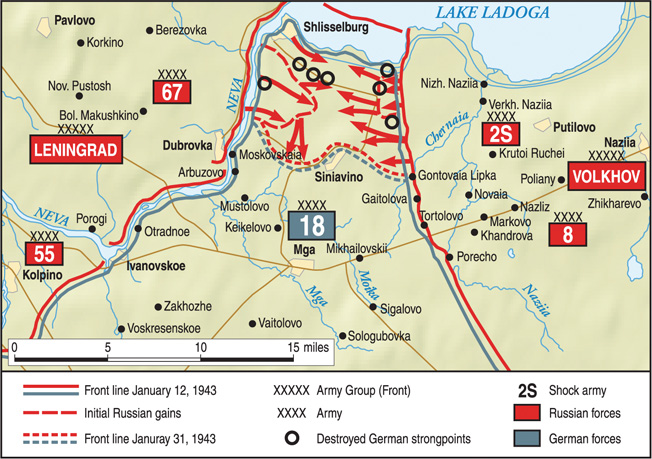
To the east, the attack by Meretskov on January 12 fared similarly to that by Govorov. Here, too, the Germans firmly clung to their strongholds but likewise could not prevent Romanovskii’s Second Shock Army from slowly penetrating around their flanks. Romanovskii deployed most of his armor on his left flank supported by Second Army shock troops and assault groups from two divisions of Starikov’s Eighth Army. An iron fist was poised to smash its way through Kruglaia Grove, Poselok No. 8, and Gaitolova. Dukhanov aimed for the vital Siniavino Heights, but initially only Kruglaia Grove was captured by 327th Rifle Division infantry supported by tanks. Everywhere else the German defense held.
At Gaitolova, Sergeant Franz Juschkat of the German XXVI Corps’ 1st Infantry Division awoke with sand dribbling into his mouth. His whole bunker rocked. Juschkat jumped to his feet and exclaimed, “This is it; Ivan has begun his attack.” A moment later Juschkat was outside scanning a cloud of smoke that rose from a horizon pulsing with intense artillery flashes that grew brighter and bigger. After two hours the artillery moved closer, toward Juschkat’s platoon’s reserve position.
Papa Juschkat: Knight’s Cross at Lake Ladoga
Now the German artillery responded but it did not silence the Soviet barrage, which crashed upon the German reserve position for half an hour. It then moved on toward the German artillery positions. Juschkat and his platoon crawled out of their bunker. Thirty feet away a neighboring platoon’s position had been leveled. All 12 men who had held the position were dead. Juschkat gave the order, “Prepare to move out.” The platoon spread out as Juschkat led his 25 men forward. Smoke obscured the way ahead.
Soviets came running toward them. Both sides threw themselves to the ground. Machine guns rattled. The Soviets had broken 600 yards into the German main line of resistance. Juschkat rose up, “1st and 2nd Squads attack with me! Up—Move out!” Covered by the rapid fire of the platoon’s MG-42, Juschkat led his men into the enemy fire. Bullets zipped past him as he dodged side to side. The Soviets were frantically setting up their own machine gun. Juschkat fired his submachine gun from the hip. The Soviets were overrun, killed, or sent to the rear as prisoners. But there were more Soviets ahead and with them were T-34s.
Before the day ended Juschkat would retake a bunker, blow up a T-34 by throwing a grenade into the open hatch, and rescue a comrade whose leg had been reduced to a bloody stump. Papa Juschkat, as his men would come to call him, would go on to earn the Knight’s Cross at Lake Ladoga. His heroic resistance was indicative of the 1st Infantry Division’s repeated counterattacks. The division’s East Prussians utterly thwarted any breakthrough by the 376th Rifle Division of the Second Shock Army and by the 80th and 256th Rifle Divisions and 73rd Naval Brigade of the Eighth Army.
“Tanks Up Front!”
It was obvious to the commander of 26th Corps, General Carl Hilpert, that his divisions were in dire need of reinforcements. Army commander Lindemann agreed, but the only reinforcements available were three regiments of the 96th Infantry Division stationed at Mga, a combat group from the 5th Mountain Division, and some limited panzer and artillery support. Late on January 12, the 96th Division’s 284th regiment with four Tigers and nine Mark IIIs of 1st Company, Heavy Panzer Battalion 502, struck toward the Scheidies forest to prevent a Soviet outflanking maneuver to the east of Gorodok.
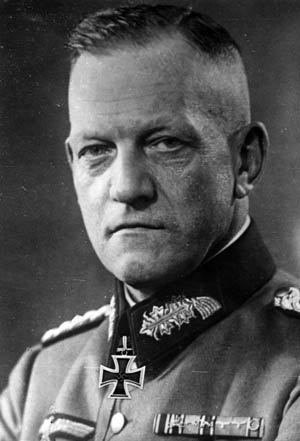
Gorodok in turn received the 283rd Regiment of the 96th Infantry Division along with a battery of the 36th Flak Regiment and a battery of 150mm howitzers. The two regiments of the 96th would become embroiled with the 268th and the 136th Rifle Divisions, supported by armor of the 61st Tank Brigade. On the extreme southern end of the western flank, the 5th Mountain Division reinforced the German lines at Moskovkaia-Dubrovka. The third 96th Infantry Division regiment, the 287th, was sent to the eastern flank of the battle to help out the hard-pressed 227th Infantry Division at Poselok No. 1.
During the night of January 12, grenadiers of the 284th Regiment forced their way forward through the deep snow and gloomy thickets of the Scheidies forest. The men cursed; at times the snow came up to their chests. The crash of a Soviet 76.2mm antitank gun broke the still of the night. Salvos of the Katyushas, nicknamed Stalin’s organs, howled in their direction.
Soviet machine guns opened up from the forest, and tracers flashed through the dark. A staff sergeant named Grueninger threw himself to the ground and crawled forward, leading his platoon. With a burst of his submachine gun, one of Grueninger’s men cut down a Soviet creeping up on the platoon’s right. At this point the machine-gun flashes were only 30 feet away. Hidden behind a snowdrift, Grueninger lobbed in three grenades. Grueninger and his platoon charged to finish the surviving Soviets. Victory seemed theirs, but then a shout froze the German soldiers’ blood, “Tanks up front!”
Repelling the Soviet Armored Assault
The dawn of January 13 rose over the snow-covered, frozen bog upon which 24 T-34 medium and T-60 light tanks of the 61st Tank Brigade rumbled toward the forest. Their cannon thundered; their rounds ripped apart tree tops. Branches, pieces of wood, and steel fragments hurtled through the air. The MG-42s turned their attention to the Soviet infantry that advanced beside the incoming tanks. Using the cover of a snowdrift, two grenadiers outflanked a T-34. They threw their explosive charges under its overhanging turret and flung themselves into the snow. A tremendous explosion dislodged the turret. Despite such heroics, the T-34s nearly spelled the end of the German regiment. Three grenadier company commanders were already dead when the Tigers of Heavy Panzer Battalion 502 came to the rescue.
Small trees and saplings gave way to the tracks of the approaching four Tiger tanks. Although the Tiger had only recently made its combat debut, the Soviets were quick to learn that it was like no other tank they had faced before. The white-painted Tigers formed up in a wide wedge and, at the sight of the T-34s, opened fire. The Tigers rocked from the recoil of their deadly 88mm guns, leaving two T-34s in flames.
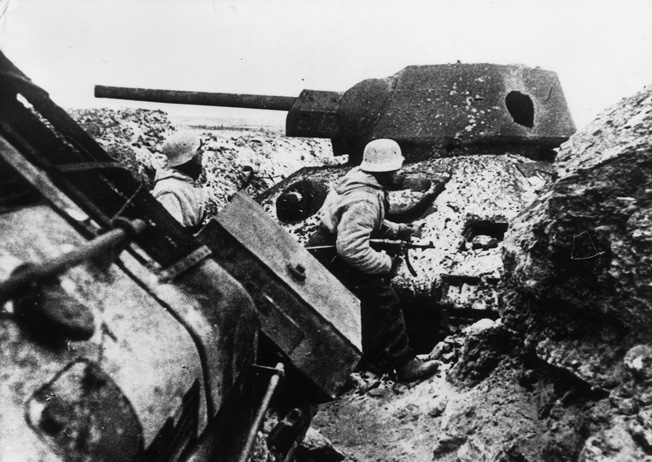
The Soviet tankers had to turn to face their most feared enemy. By the time they did so, two more T-34s were knocked out while the Tigers dispersed into cover. Company commander First Lieutenant Bodo von Gerdtell’s Tiger rolled down into a defile and then heaved up on the other side. Gerdtell watched as a T-34 plowed through some undergrowth and swung its gun on another Tiger. “Achtung Schneider! Enemy to your right,” called Gerdtell to his gunner who already had the T-34 in his sight. Schneider’s round struck the T-34’s right flank, blasting the turret.
That T-34 never got a chance to shoot, but another one had already singled out Gerdtell’s Tiger, which shook from the impact of an armor-piercing round that had failed to penetrate. Schneider tried to fire back, but before he could do so another round crashed into the Tiger’s gun mantelet. Schneider felt a long steel splinter penetrate his chest, mortally wounding him. His comrades carried him back to an infantry position while the tank duel concluded. After 12 tanks were lost, the remaining T-34s retreated. Gerdtell’s Tiger was recovered, but as evening fell on January 13 the Soviets attacked again.
From his open turret hatch, platoon leader First Lieutenant Hans Bölter waved to Gerdtell. Bölter ordered his platoon of two Tigers to move out. One following the other, the two white behemoths rumbled into the twilight of January 13. Coming with them was a handful of light Mark III tanks. Bölter scanned the terrain from his hatch until the flash of an anti-tank gun persuaded him to duck inside. The Tiger turned and dipped into a depression. Inside, the crew braced themselves. Another round zoomed by a few meters to the right. The Tiger halted, and its gunner zeroed in on the antitank gun’s muzzle flash. The 88mm round blew up the Soviet gun position, igniting its ammunition stockpile. The duel with the anti- tank gun was the prelude to a harrowing night battle.
Six T-34s Destroyed
It had become so dark that the Tigers lost sight of each other even though they were only a few hundred meters apart. Soviet soldiers watched the ominous, gigantic, white silhouette of the Tiger grind over the snow. The Soviets were nearly invisible, but Bölter caught sight of their shadowy movement through the Tiger’s vision slit.
“Bow and turret machine guns open fire,” ordered Bölter. Fire spit from the guns, flashing brightly on the snow and illuminating the Tiger’s massive 88mm gun. Bölter peeked from his turret hatch as the second Tiger opened fire. The round zipped by Bölter’s Tiger, almost hitting it. Ahead, another muzzle flashed in the night—a T-34 just 900 yards ahead. If any of the Soviet infantry survived the machine guns, Bölter would have to deal with them later. The Tiger came to a halt, and the gun swung and fired.
Instantly, a column of flame shot from the T-34’s position. The white flames reflected off the steel of Bölter’s Tiger, making him an easy target for another T-34. The ground exploded. Blinding light flashed into the vision slits. Bölter’s Tiger sped up and slipped into the darkness. Gunner Bastian Gröschl applied some foot pressure to swing the turret around until the T-34 was in his crosshairs, and then he pushed the firing button. He scored another hit, but this time the 88mm round deflected off the T-34’s sloped turret armor.
The T-34 fired again, another miss and its last chance. Gröschl’s second shot hit between the turret and hull, the weak spot. The whole turret flipped into the air, and white flames shot from the hull. Two T-34s were down, but now more were moving in from the right and left. In the melee that followed, driver Hölzl deftly outmaneuvered the T-34s that were trying to outflank the Tigers.
Driving into a defile, Bölter’s Tiger emerged on the other side to run into a T-34 that was less than 600 feet away. At such close range any hit would be a kill. Both tanks fired at the same time. The T-34 round missed by only a meter. Gröschl’s round did not and turned the Soviet tank into a charred wreck. Another Soviet round shot out of the night, bouncing off the Tiger’s thick frontal armor and jolting the whole crew inside. Gröschl replied and knocked out another T-34. Close by, the German grenadiers were fighting to regain their former positions.
Firing his submachine gun out of his turret, Bölter drove off a group of Soviet infantry. After this, the Tiger shook from three more antitank rounds, all of which failed to penetrate its armor. Gröschl went on to score his fifth tank kill of the night.
With so many losses, Soviet morale broke. The remaining T-34s fell back but continued to battle the pursuing Tigers. Bölter’s Tiger heaved up out of another depression to spot a T-34 slipping into the cover of a forested area. Gröschl’s round hit it in the rear, right in the fuel tanks. The flames of the burning tank reflected crimson on the snow. Bölter continued, hunting a seventh T-34 into the forest. After knocking it out he discovered his radio had broken down.
“Get Out!”
Suddenly, one after another, two rounds smacked into the Tiger. The smell of gasoline flooded the inside, and flames began to break out on the rear. “Get out!” yelled Hölzl. Everyone jumped out, Bölter landing right on top of a Soviet soldier. Instinctively, Bölter thrust his pistol into the Soviet’s chest and pulled the trigger.
Bölter’s pistol failed to fire. The Soviet soldier shouted something and ran away. From what Bölter could tell, the Soviet close assault team had pulled back so as not to get caught in the tank duel. In the confusion, Bölter lost his own men and ran into the night. Where was the other Tiger and where were the accompanying Mark IIIs? Soviet soldiers moved close by and shouted at him. Bölter pointed and turned his face away. In the night the Soviets had mistaken him for one of their own and moved off.
After fooling a second group of Soviets, even tailing along with them for a while, Bölter ran into the second Tiger. Its main gun and two machine guns opened up. Diving into a hole in the ground, Bölter barely managed to escape being killed by his own men. Finally, he crawled onto the Tiger’s back to be greeted by its commander who pointed a pistol out of the turret hatch.
“It’s me, Schutze!” called Bölter in the nick of time. When Bölter crawled inside, his first thoughts were of his comrades, “My crew must be somewhere nearby!” All four of them were soon found. It was only then that Bölter realized he had received four wounds from shell fragments when his own Tiger was knocked out. Against his objections, Bölter was sent to a field hospital.
Together with the Tigers and eight Mark III’s, the grenadiers of the 284th Regiment had thrown back the Soviet penetration. Unfortunately, the defensive success was soured when 23 officers of the 284th Regiment were killed in a Soviet air raid on a command post.
The Fight For Preobrazhenskoe Hill
At Gorodok, the entrenched 170th Infantry Division had continued to hold up the 268th Rifle Division. MG-42s and sniper rifles lurked inside the shattered windows of smoldering ruins. Two T-34s had their tracks blown off in a German minefield, eliciting cries of joy from the defenders. The reinforcements of the 96th Infantry Division’s 283rd Regiment arrived just in time on January 12 to fight their way through the Soviet lines and entrench themselves at a Gorodok hospital.
During the morning of January 13, a force of 26 tanks of the 61st Tank Brigade overran the trenches of the 9th Company. The grenadiers held tight, their lives hanging in the balance. The shadow of the Soviet armor blocked out all light. The metal giants ground their tracks into the snow, attempting to bury the grenadiers alive, but it was so cold that the frozen earth refused to give way. When the Soviet infantry advanced in the wake of its tanks, the German foxholes unexpectedly came alive with a murderous fire.
Deprived of their accompanying infantry, the Soviet tanks continued to penetrate deeper into the German defense until they came under fire from a battery of the 36th Flak Regiment and nearby 150mm howitzers. Twenty-four tanks were destroyed in the ensuing artillery-versus- tank duel, halting the assault.
On the extreme southern flank of the battle on the River Neva in the Moskovskai- Dubrovka sector, the 5th Mountain Division boldly counterattacked on January 13 to drive the 268th Rifle Division back for more than a mile. Although the Germans fought hard and localized points held out, the Soviet assault slowly but surely clawed its way forward. South of Shlisselburg, the snowdrifts were marked by black shell holes. Cannon, machine guns, ammunition boxes, straw boots, and wagon wheels were among the litter of war.
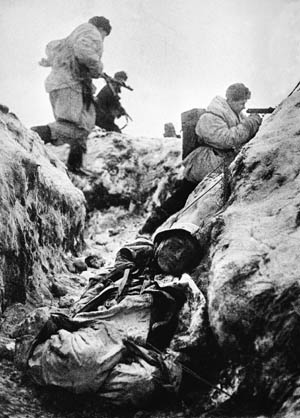
The body of a young Soviet soldier lay dead in the snow. His hands still gripped his rifle. A white camouflage cape had been thrown over his face. Beside him, his helmet rested on a stick pushed into the ground. On the helmet was a piece of white paper, probably with the boy’s name. He had been part of the 86th Rifle Division that advanced from south of Shlisselburg. The 86th Rifle Division fought its way toward Poselok No. 3 and Preobrazhenskoe Hill, where the 227th Infantry Division refused to give more ground. The hill was the main German strongpoint protecting the southern flank of Shlisselburg.
Meanwhile, the 136th Rifle Division supported by tanks of the 61st Tank Brigade pushed back the 96th Infantry Division to advance another mile eastward toward its objective, Poselok No. 5. The latter consisted of little more than a few huts and a small peat processing plant amid a frozen bog. However, Poselok No. 5 lay in the center of the Shlisselburg-Siniavino corridor and through it ran the only north-south road.
While Govorov’s divisions closed in on Poselok No. 5 from the west on the 13th, Meretskov’s divisions were closing in on No. 5 from the east. The advance of the Soviet fronts was slowed by continuous German resistance. On the Volkhov Front, Lipka still held out but was almost encircled. Supported by artillery, a battalion of the 227th Infantry Division clung to Poselok No. 8, where it defied repeated assaults by the tough Siberian units of the 372nd Rifle Division.
The fresh Soviet 18th Rifle Division and the 98th Tank Brigade were ordered to outflank Poselok No. 8 from the south but could make little headway. Farther south, the German 227th Infantry Division, reinforced by a regiment of the 28th Jäger Division, continued to hold on to Poselok No. 7. At Kruglaia Grove, part of the Soviet gains were lost to a counterattack by the 1st Infantry Division. During the day, strong winds and heavy snowfall aided the Germans by bogging down tank assaults, making accurate artillery fire difficult and preventing Soviet air attacks.
From January 14 onward, the weather improved and with it returned the Soviet air attacks. The Soviets threw in the remainder of their second-echelon divisions. On the 15th, the last German reinforcements arrived, no more than two regiments of the 61st Infantry Division. The regimental groups were hurried up from Pogostye, 20 miles southeast of Mga, and fed into the bottleneck to defend Poselok No. 5. The same day, the 86th Rifle Division took Preobrazhenskoe Hill, which on January 16 proceeded to fight its way into Shlisselburg town.
Street Fighting in Shlisselburg
Vicious street battles followed for the next two days, with the 227th Infantry Division slowly falling back and finally receiving orders to withdraw. Heavy Panzer Battalion 502 continued to be in the thick of the action, but it too was being worn down by attrition. On January 16, Gerdtell was killed in a night battle and the battalion commander was wounded. The casualties were worst among crews of the lightly armored Mark IIIs, which were supposed to support the Tigers. Seventeen of the 40 crewmen who manned the eight Mark IIIs were already dead.
In Govorov’s center, it took four more days of intense fighting for the 136th Rifle Division and the 61st Tank Brigade to push forward another 1.6 miles to the western outskirts of Poselok No. 5. On that day, the 123rd Rifle Brigade captured Poselok No. 3 but was repulsed at Poselok Nos. 1 and 2. On the southern flank, although reinforced by the 13th Rifle Division, the 102nd Rifle Brigade, and the 142nd Naval Brigade, the 268th Rifle Division was unable to take Gorodok.
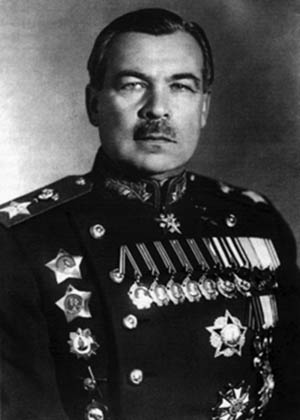
On the eastern side of the bottleneck, the Volkhov Front likewise sent more and more units into battle: the 18th and the 71st Rifle Divisions and the 98th Tank Brigade on January 13 along with the 191st Rifle Division on the January 14. They were joined by the 239th and 11th Rifle Divisions, the 12th and 13th Ski Brigades, and the 122nd Tank Brigade over the next three days.
The piecemeal Soviet commitments and the unrelenting German resistance slowed but did not stop the Soviet advance. On January 14, Podgornyi Station fell to the 256th Rifle Division. On the morning of the 15th, a renewed assault by the 122nd Tank Brigade and the 372nd Rifle Division captured most of Poselok 8. Momentarily holding out behind the knocked-out hulls of Soviet tanks, a German battalion led by a Major Ziegler was all but done for. He had to break out that night. One hour before midnight, Ziegler led his grenadiers of the 227th Infantry Division out of Poselok No. 8. Rifles and bayonets held ready, a strong assault group led the way for wounded who were pulled on small, boat-shaped sleds called akyas.
Machine gunners guarded the flanks, and the rest of the battalion formed the rear. Ziegler looked into the black night sky; the stars of Orion were their guide southward. A Russian-speaking German got Ziegler’s battalion through Soviet lines and helped Ziegler take 40 prisoners before his battalion reached friendly positions.
“It Was Hell on Earth”
With Poselok No. 8 in its grasp, the 372nd Rifle Division pushed on to Poselok No. 1. Soviet forces from both fronts were now on the western and eastern outskirts of Poselok Nos. 1, 2, and 5, separated by only a mile. Stalin was pleased and on January 15 promoted Govorov to colonel general. On the night of January 16, the 18th Rifle Division stormed Poselok No. 5 three times. Intense fighting flared throughout the night, through bitter bone-chilling cold that dipped to 30 degrees below zero Fahrenheit.
From along the railway embankments of the peat works, a hail of accurate German fire prevented the Soviet battalions from getting closer than 50 feet to the German positions. On the 17th, a Tiger tank drove north on the road to Shlisselburg in the vicinity of Poselok No. 5. It came under such heavy fire that it tried to turn but in the process got stuck in the peat bog beside the road. An antitank gun hit the thinner armor of its engine compartment, and the Tiger was knocked out.
Zhukov, who at the time was at Meretskov’s headquarters, heard of the incident and immediately gave orders that the wreck be captured. By evening, while the Tiger was being towed out by the 18th Rifle Divison, Soviet armor was blasting high explosives at the ruined buildings of Poselok No. 5. The Soviets and Germans were fighting for every house and every ruin.
The two regimental groups of the 61st Infantry Division along with 4th SS Police Division troopers held open the Soviet jaws so that their comrades of the 227th and the 96th Infantry Divisions and the 5th Mountain Division could escape encirclement to the north.
Nikolay Vasipov, a veteran of the Soviet 67th Army’s 34th Ski Brigade, recounted the fierce fighting along the north-south road: “The trees were smashed and the air was thick with smoke from the burning peat. The Germans had constructed a road through the marshes. It was an inferno and I found it hard to ignore the cries of the wounded echoing through the smoke and the trees. It was hell on Earth.”
The Fall of Shlisselburg
Fighting continued all night with various German combat groups fighting their way through the rapidly closing gap. On the morning of January 18, the Soviet jaws snapped shut near Poselok No. 1. An hour later, the 136th Rifle Division beat back a determined German counterattack and took Poselok No. 5.
In Leningrad, the rumor of a great Soviet victory spread like wildfire. Windows opened against the cold to proudly display flags. Gramophone music flowed from bombed-out apartments. Late on the night of January 18, 1943, Leningrad radio asked its listeners to stand by for a special message: “The ring has been burst open. We have long waited for this day, but we knew it must come. As we laid our dear ones to rest in the frozen ground of the mass graves, without ceremony, we swore an oath to them by way of a farewell: ‘The ring must be burst open!’”
Many more would to perish on the frozen ground. On January 18, Shlisselburg fell to the 86th Rifle Division. Of the 15,000 people who lived there before the war only a few hundred remained. All the others had been shipped to Germany, died from hunger, or were executed by the Germans. Despite this, Vasipov remembers that the citizens of Shlisselburg would have preferred to remain under German occupation. Vasipov claims the remaining population was marched off to Lengingrad and shot by the NKVD, the Soviet secret police.
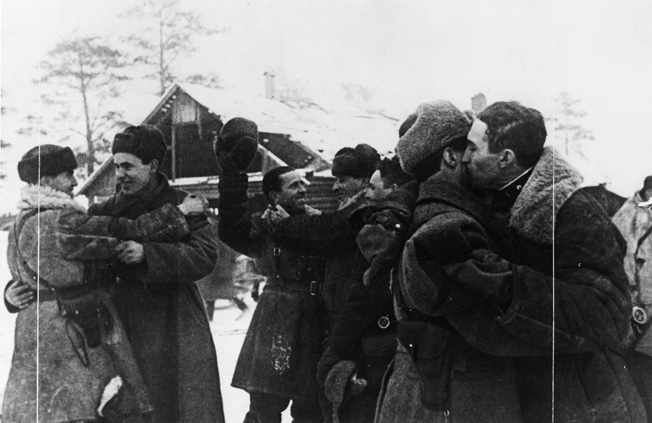
On the same day that Shlisselburg fell, Lipka was secured by the 128th and 372nd Rifle Divisions. The Soviet divisions bore down on the remaining German units in the pocket, which were desperately trying to get out. Everyone was needed to hold back the two freshly reinforced Soviet fronts, which now turned south, intent on overwhelming Gorodok and Siniavino.
To stop them, Lindemann counted on General Carl Hilpert, who took command over all the German divisions between the River Neva and the River Volkhov, including the 4th SS Police Division; the 1st, 11th, 21st, 212th, and 223rd Infantry Divisions; and the 28th Jäger (light) Division. The 61st, 96th, 170th, and 227th Infantry Divisions, which had been heavily engaged since the beginning of the battle, all had to be disbanded due to heavy losses.
“Who Doesn’t Want to Fight?”
The SS Police Division and the 11th and 21st Infantry Divisions desperately sought to hold the Siniavino position. Throughout the day, Soviet mortar rounds and artillery shells bombarded the German lines on the Siniavino Heights. At night, in extreme cold, the 142nd Naval and 123rd Rifle Brigades charged again and again but could not overcome the German defenses. So strong were the German positions and so vulnerable the Soviet approaches through the marsh that General Nicolai Simoniak, the commander of the 136th Rifle Division, refused Zhukov’s direct orders to join the attack.
“Trotskyite! Passive resister!” shouted Zhukov over a high-security line. “Who are those cowards of yours? Who doesn’t want to fight?” Simoniak retorted that there were no cowards in the Sixty-seventh Army. Simoniak’s pessimism proved correct as the Soviets were unable to capture the heights proper but did manage to fight their way two miles southwest to capture Poselok No. 6.
A more serious attempt to outflank the Siniavino Heights from the west failed when the 102nd Rifle and the 220th Tank Brigades and the 123rd Rifle Division were unable to overcome the German defenses at Gorodok. On the eastern extreme flank of the battle, Juschkat and his platoon of the 1st Infantry Division still held out at Gontovaia. For eight days, Juschkat and his men had repelled multiple Soviet attacks each day, coming at them from two sides. Finally, a pioneer company came up to lend support.
While Juschkat was able to get some rest, on January 21 Sergeant First Class Hans Bölter walked out of the field hospital to return to the battle. Saddened by the somber news of Gerdtell’s death, Bölter climbed back into a Tiger the next day. On a second day of reconnaissance, he happened upon a group of KV-1 tanks, destroying two and causing the rest to flee. From north and east of Gorodok to south of Poselok No. 6, along the Siniavino Heights east to Gontovaia Lipka, the German front held. On January 31, the Soviets broke into Siniavino in a final violent effort but were thrown out by an 11th Infantry Division counterattack. Exhausted and drained, the Soviet attacks ended when Meretskov suspended the battle.
A Costly Victory For Zukhov
Although the final objective of Siniavino eluded them, the Soviets secured the all-important land corridor to Leningrad. They had captured Shlisselburg, Marino, Lipka, and Poselok Nos. 1-8. To acknowledge their success, the 136th and the 327th Rifle Divisions were designated as the 63rd and 64th Guards Rifle Divisions, respectively, and the 61st Tank Brigade became the 30th Guards Tank Brigade. The 61st Tank Brigade commander was promoted to colonel. Stalin promoted General Zhukov to marshal of the Soviet Union on the day Shlisselburg fell.
Characteristically, Zukhov’s victory did not come cheap. Some 33,940 Soviet soldiers were dead, captured, or missing, and there were 81,142 wounded, a total of 115,082 casualties out of 302,800 troops engaged. Equipment losses were heavy as well, with the Sixty-seventh Army alone losing 225 tanks.
The Germans suffered at least 12,000 dead, considerably fewer than the Soviets, but these were losses the Eighteenth Army could ill afford. On January 31, a Wehrmacht communiqué formally acknowledged its defeat to the troops: “Between Lake Illmen and the Gulf of Finland the Soviets have been able to gain more ground despite local defensive successes by our forces. The defensive fighting in this area is continuing with undiminished intensity.”
Almost all of the German units had managed to fight their way out of the pocket, however, bringing with them 2,000 wounded; and very few Germans were taken prisoner. All the heavy equipment had to remain behind but was destroyed before it could fall into Soviet hands.
German tactical success could not obscure the Soviet strategic victory. Only a week after the end of the battle, the Soviets laid down a new rail line through the land corridor from Poliany to Shlisselburg. The bread rations shipped to Leningrad more than doubled. The days of starvation were over. However, because the corridor was only 5-6 miles wide, any Soviet communications and supply lines remained subject to German assaults and artillery strikes.
From their observation posts on the shell- cratered Siniavino Heights, the Germans could see all the way to Lake Ladoga. Operation Spark proved to be only the first phase of the Second Battle of Lake Ladoga, which would last until April as Stalin’s northern armies readied themselves for the next great assault on the Third Reich’s Army Group North.
Originally Published Dec. 2009
Updated Feb. 2, 2017
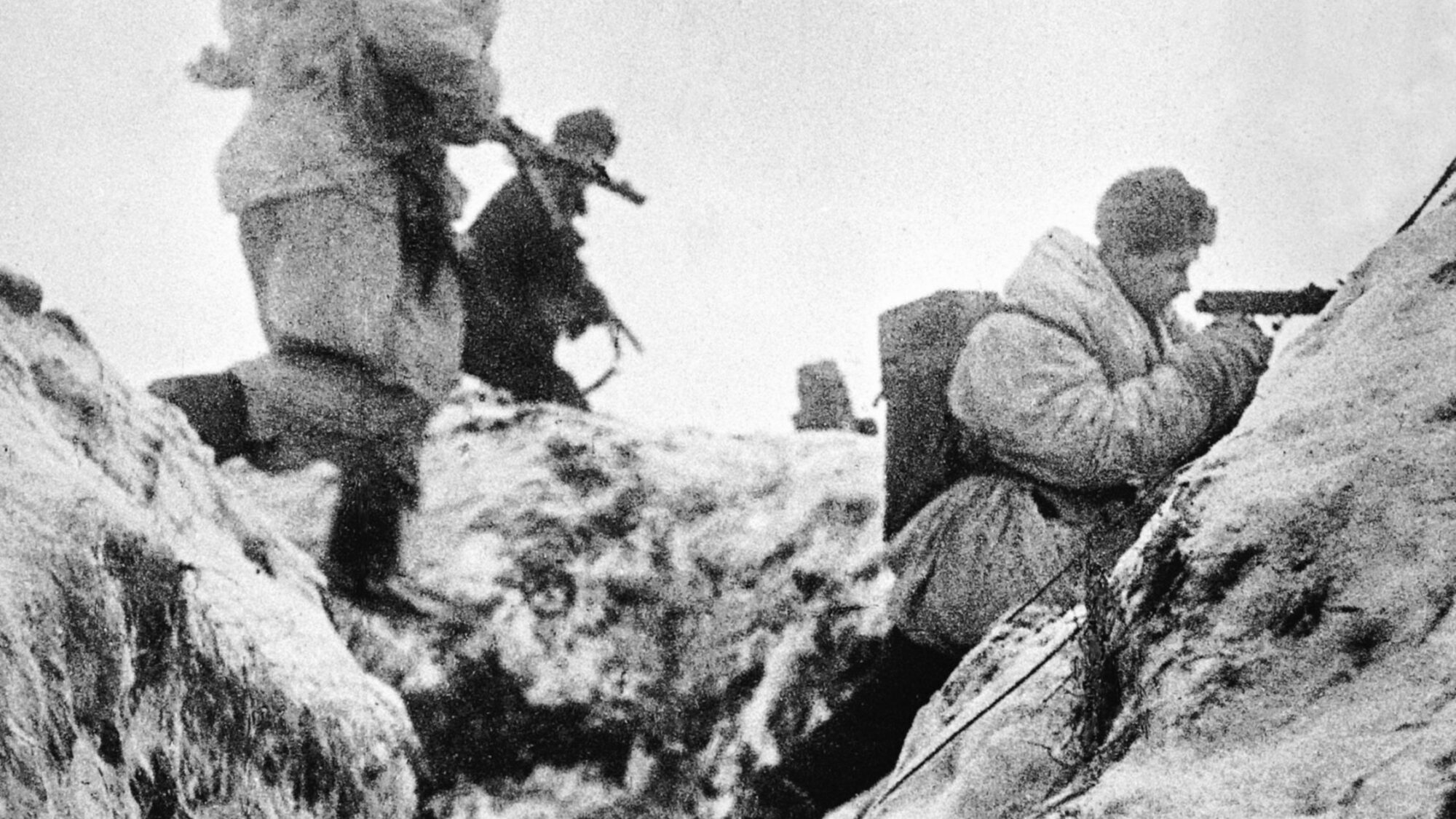

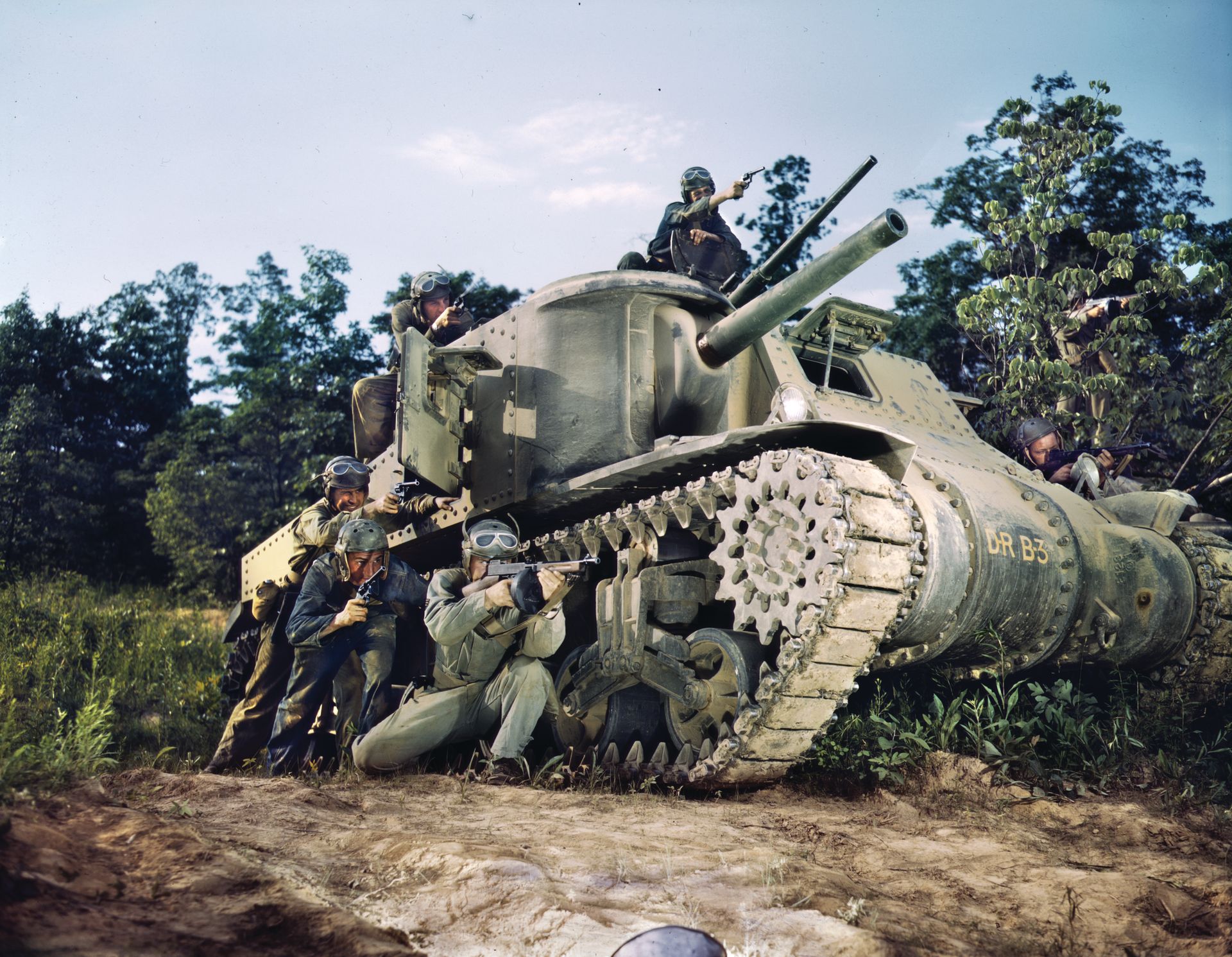
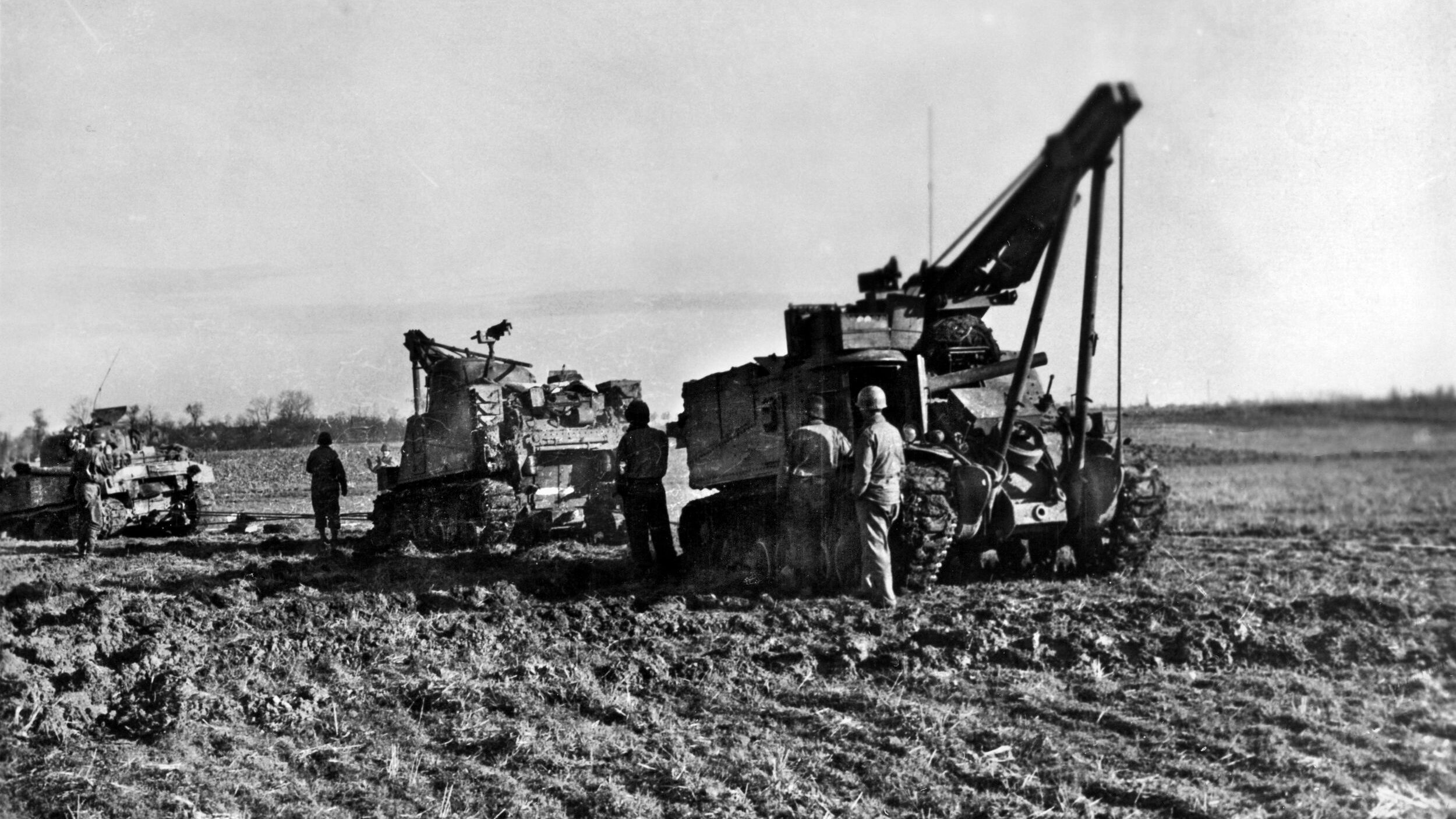
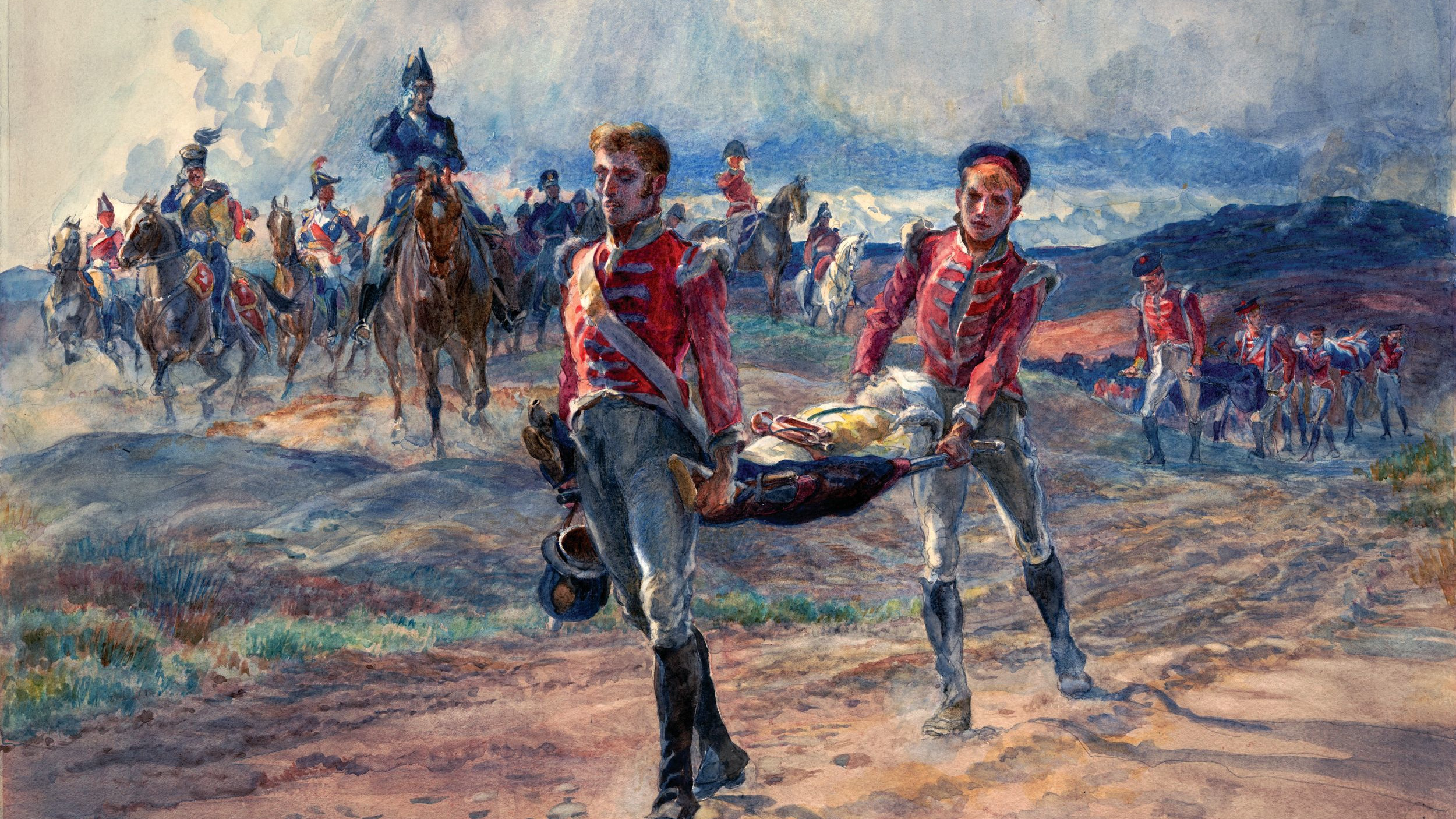
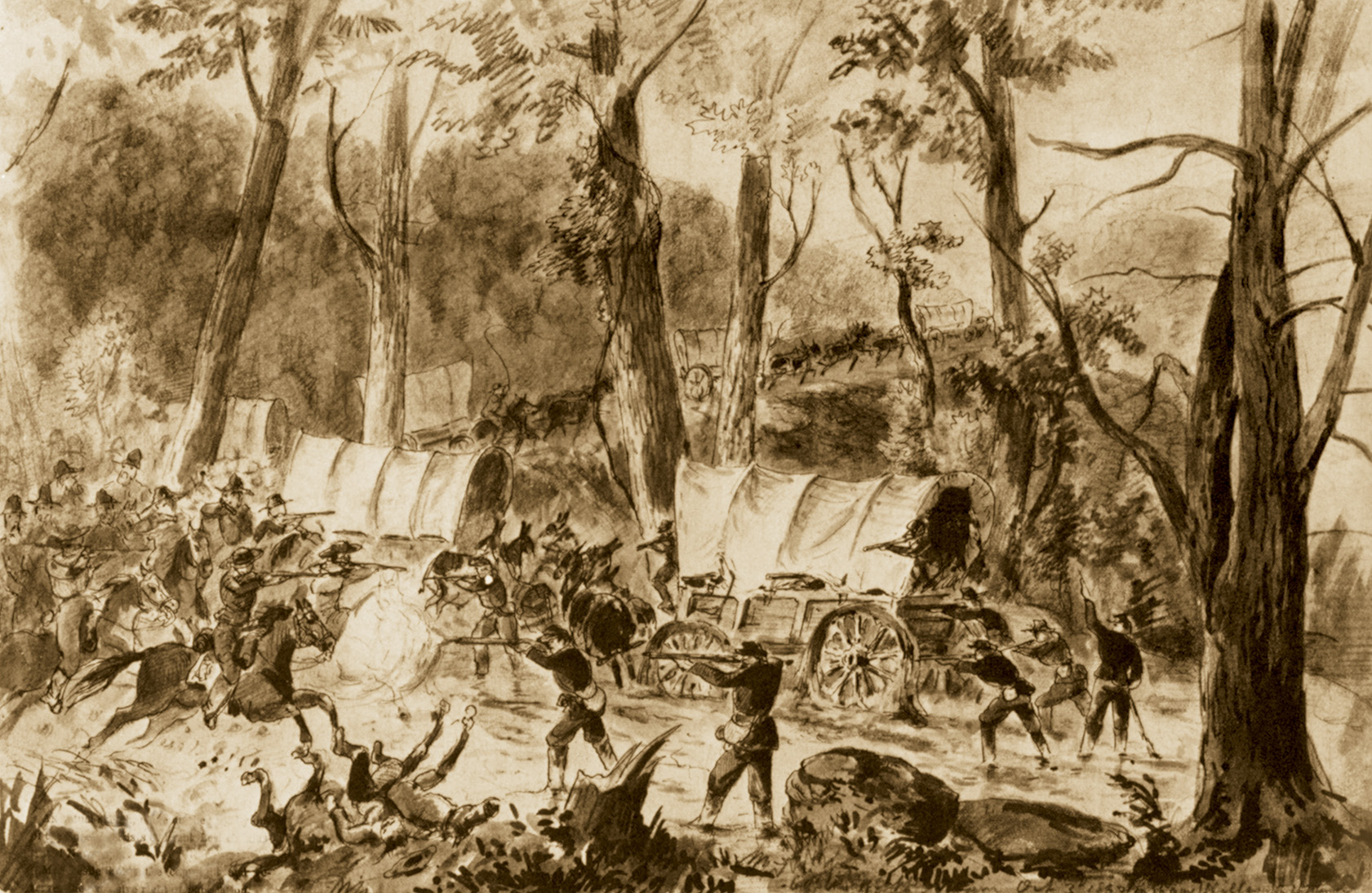
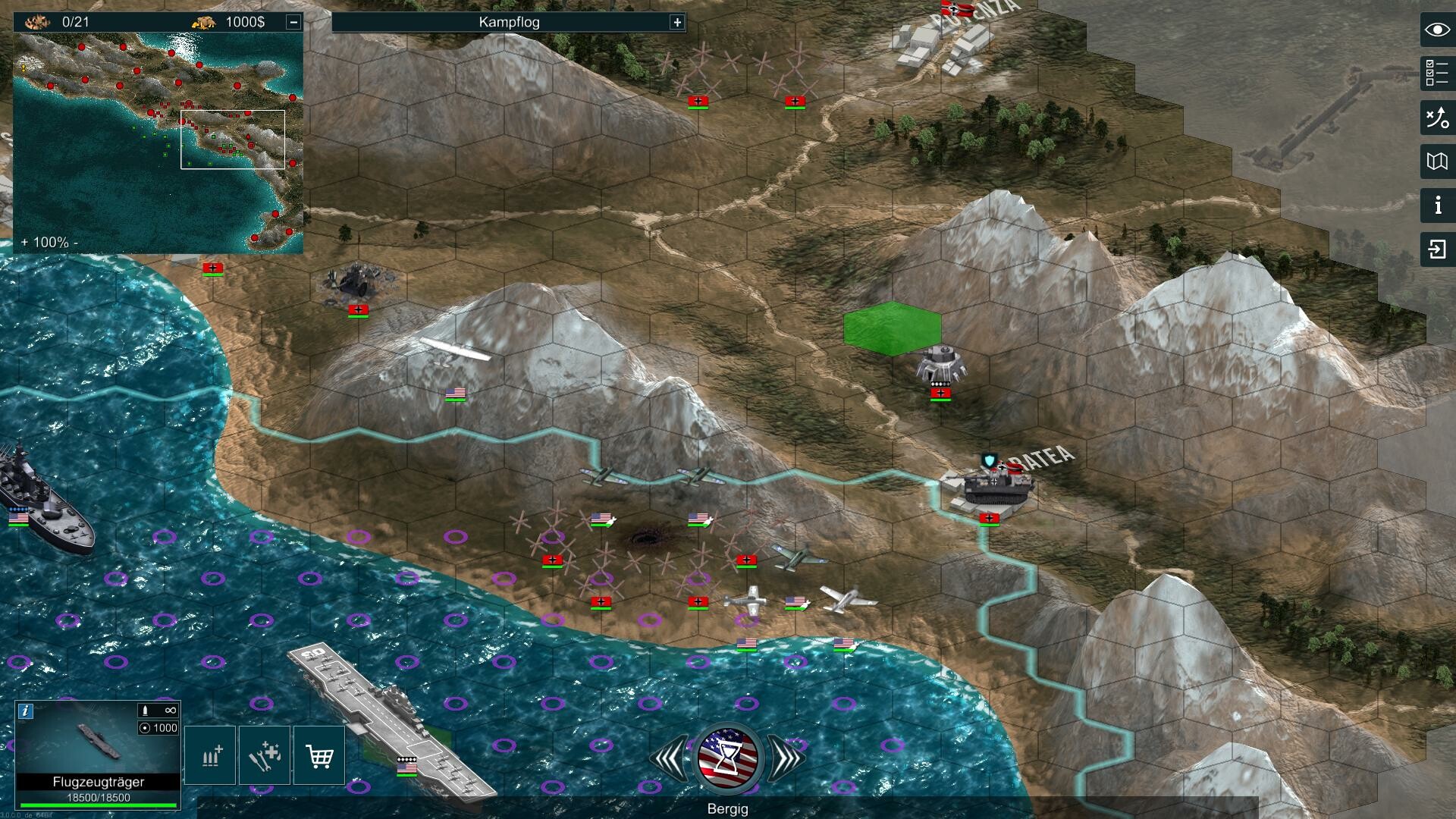
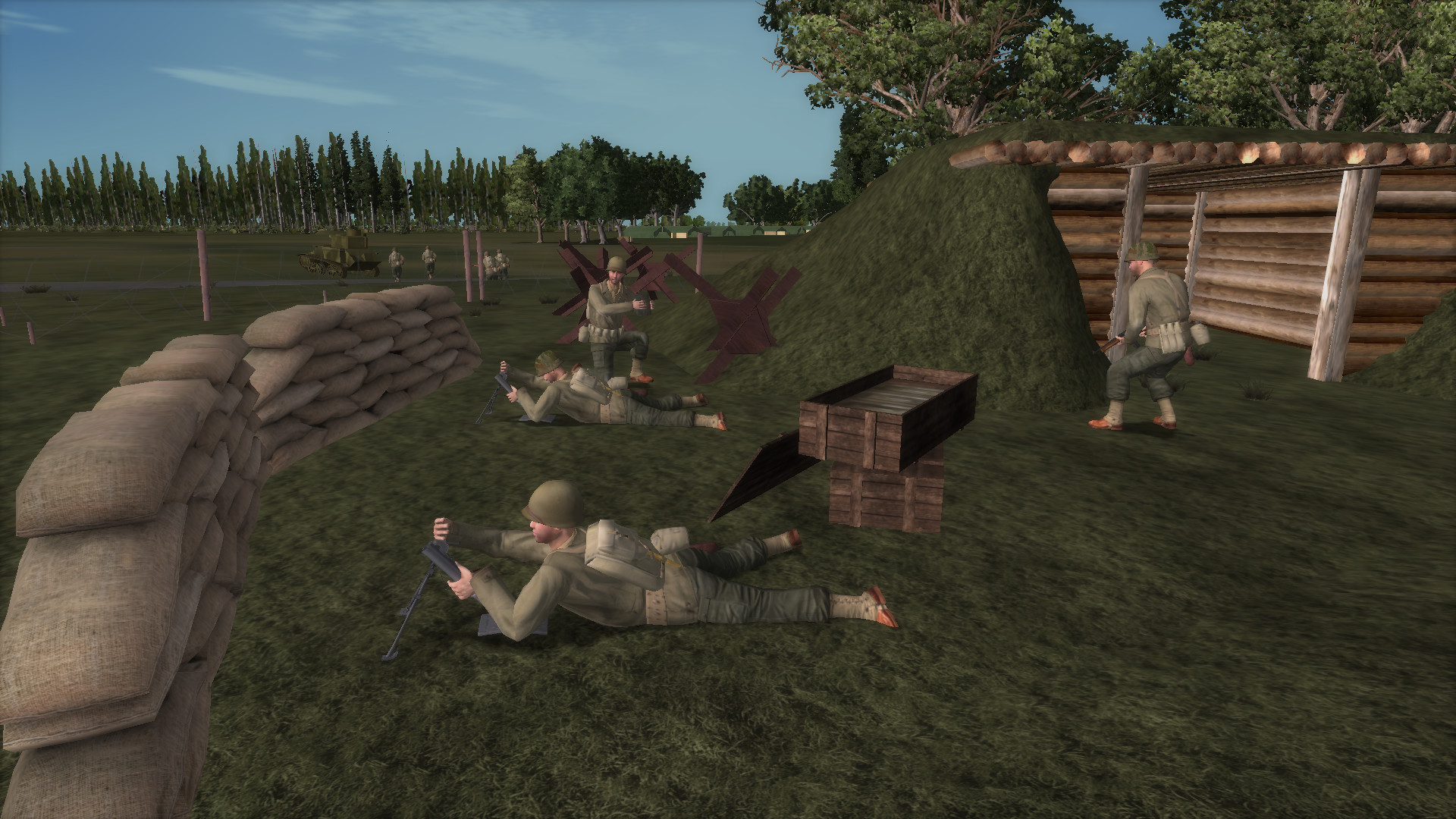
Join The Conversation
Comments
View All Comments